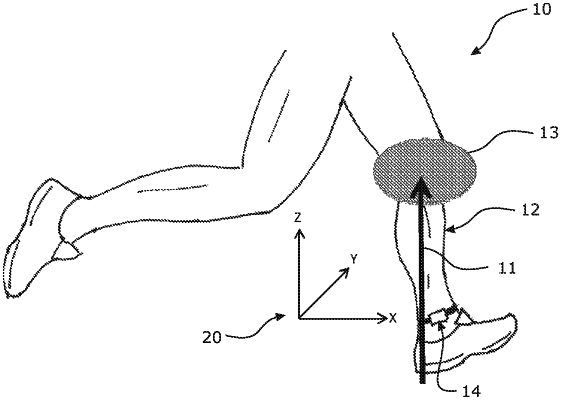| CPC A61B 5/112 (2013.01) [A61B 5/1036 (2013.01); A61B 5/1124 (2013.01); A61B 5/6829 (2013.01); A61B 2562/0219 (2013.01); G01P 15/00 (2013.01); G01P 15/18 (2013.01)] | 20 Claims |

|
1. A cumulative load monitoring system for lower limbs of a subject, the system comprising:
one or more motion sensors configured to be secured or mounted to one of or both of the subject's lower limbs, the sensor(s) being configured to sense the tibial shockwaves experienced by the lower limb(s) as the subject engages in physical activity involving repetitive footstrikes of the lower limb(s) with a surface and generate representative tibial shockwave data; and
a data processor that is configured to receive the tibial shockwave data sensed by the one or more sensors, and wherein the processor is configured to process the received tibial shockwave data and generate feedback data in the form of an estimate of the subject's cumulative load stimulus over one or more activity sessions by:
identifying and extracting peak shock data from the received tibial shockwave data;
identifying the peak shock data as a running activity or walking activity;
modifying the peak shock data by:
applying a bone stimulus saturation model to the peak shock data based at least partly on a saturation threshold and the identified activity,
applying a recovery model to the peak shock data based at least partly on the time between successive running and/or walking activities after saturation, and
segmenting the peak shock data based on its identified activity; and
generating the estimate of the subject's cumulative load stimulus based at least partly on the summation of a variable that represents or is based on the modified peak shock data.
|